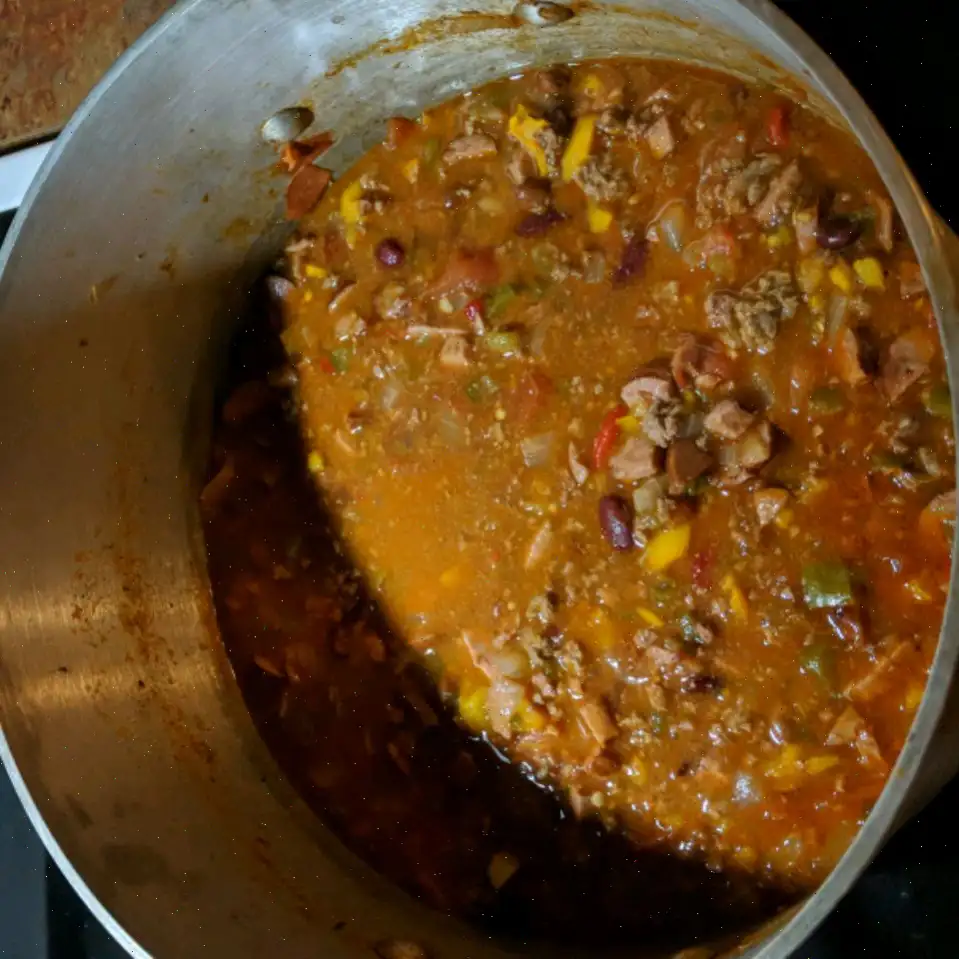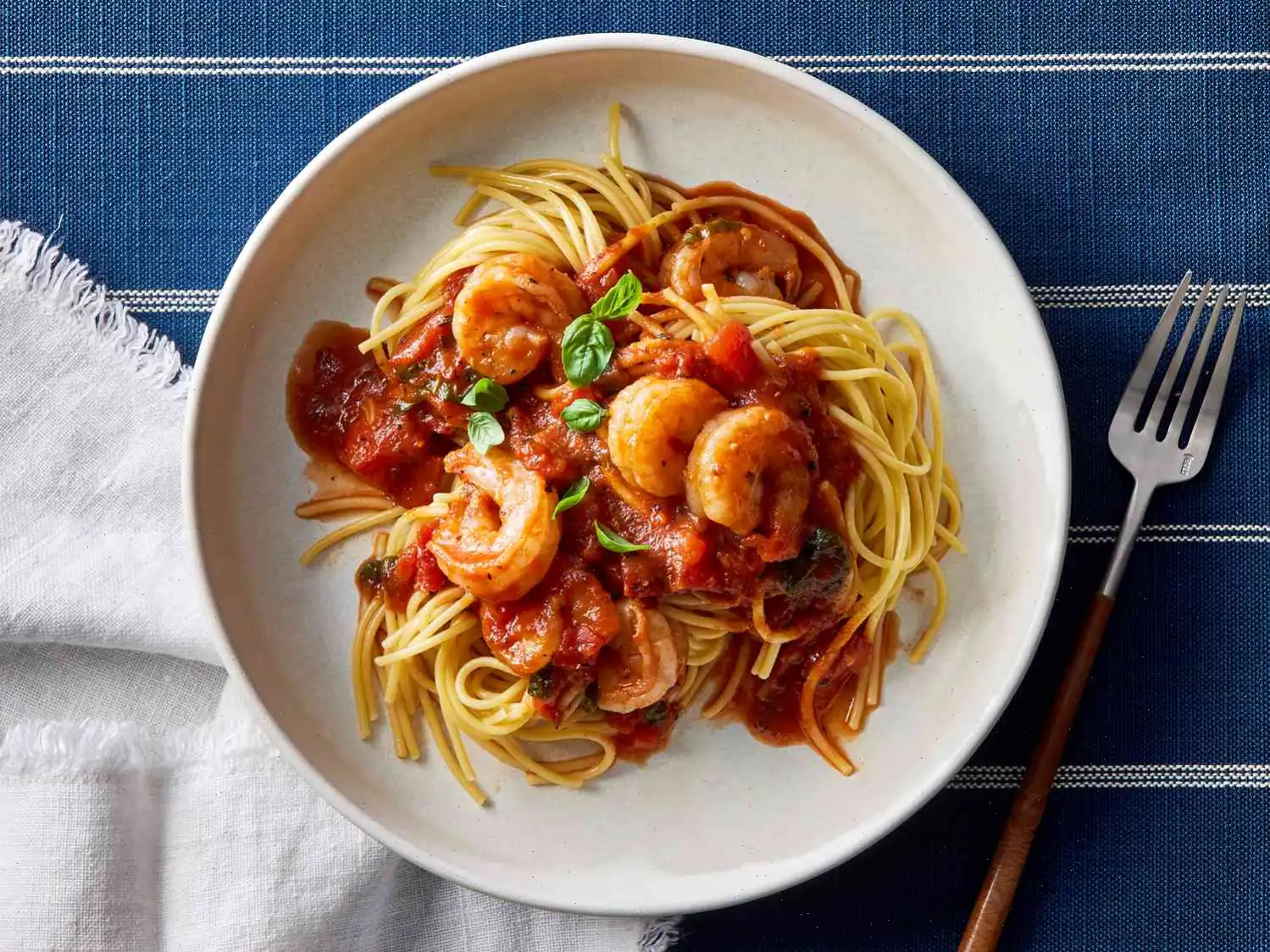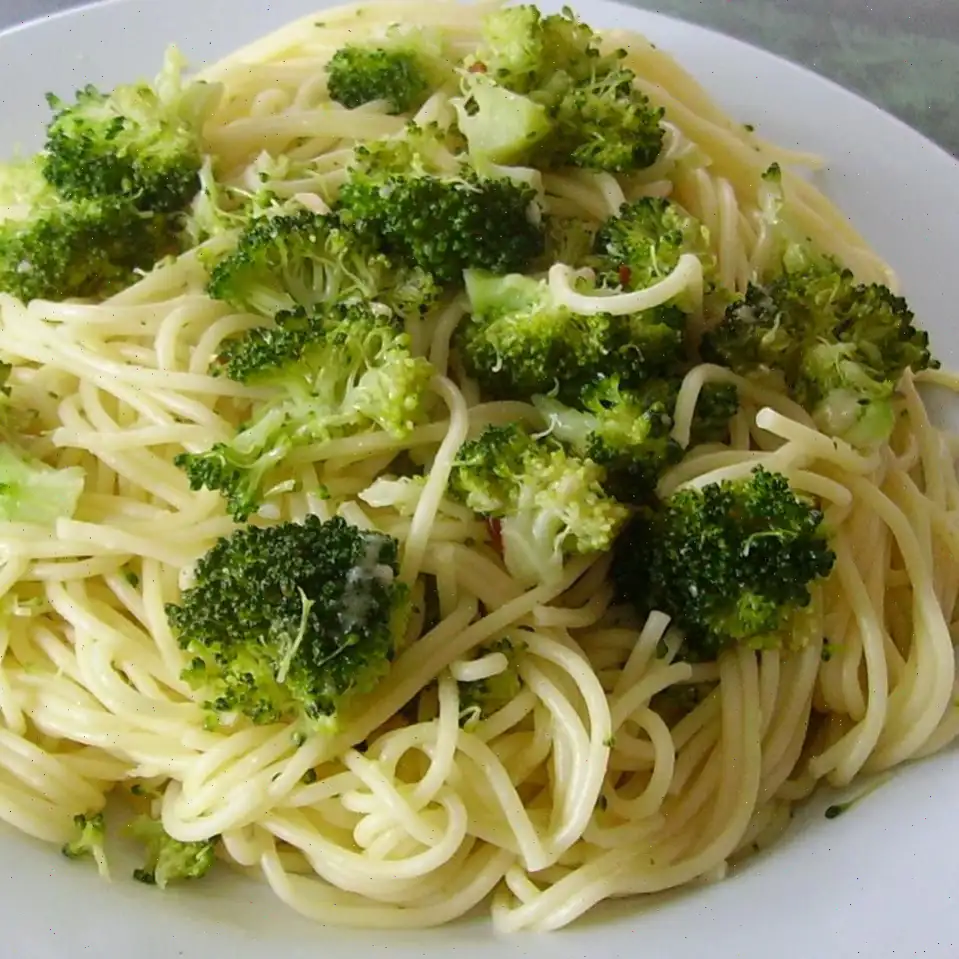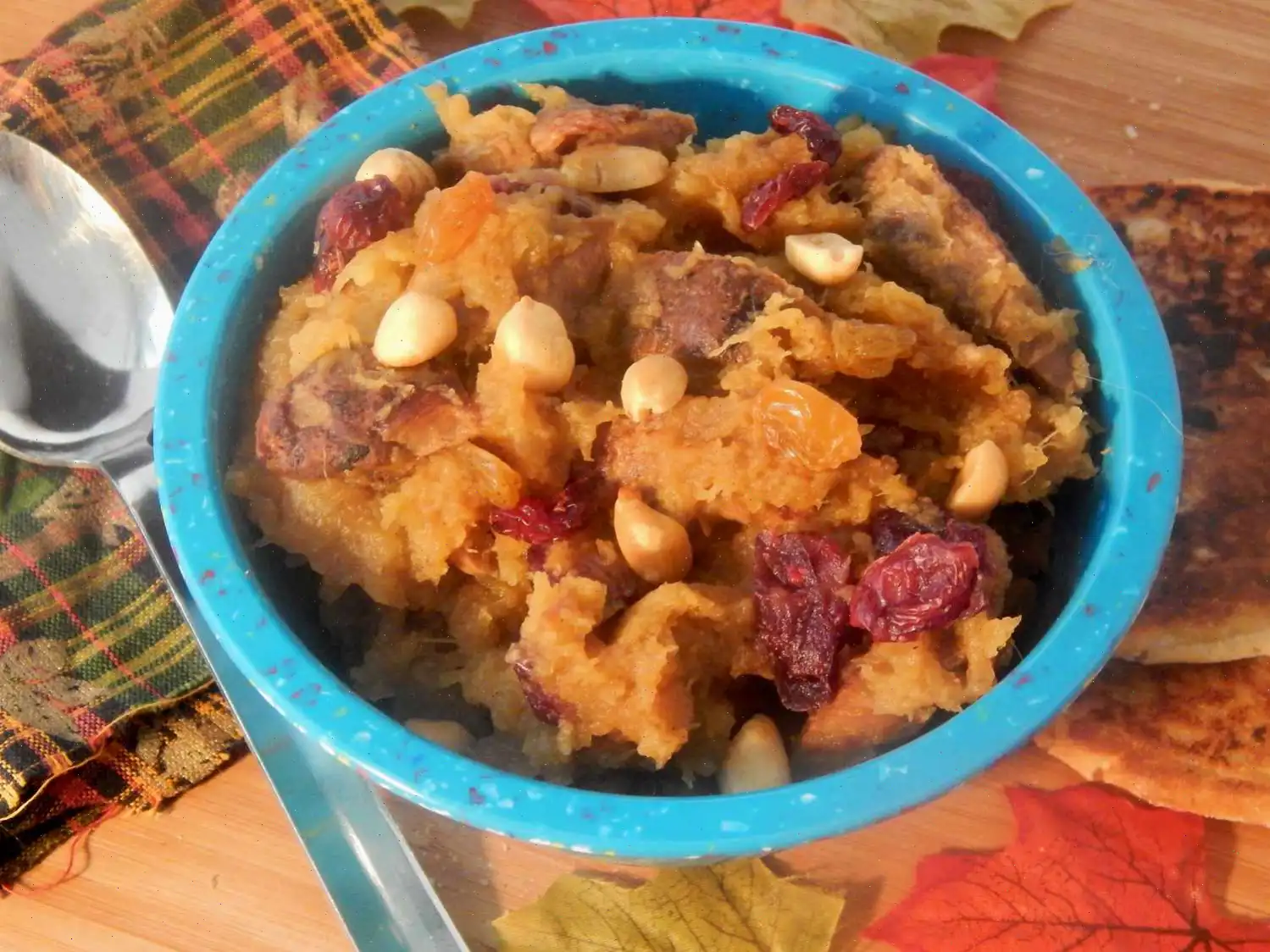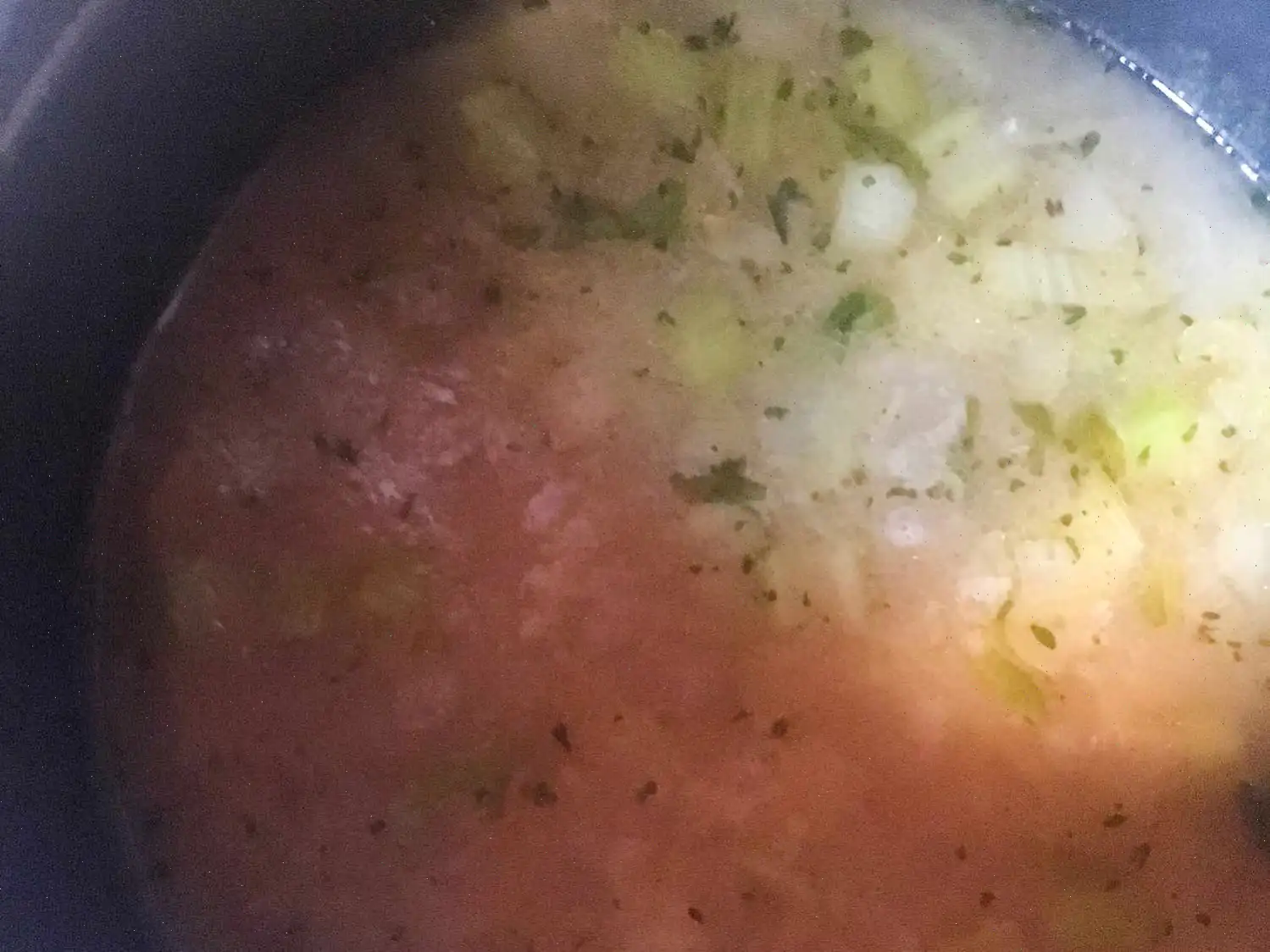
Polish Chili Recipe
Ingredients
- 2 pounds ground beef
- 1 pound fully cooked Polish sausage or kielbasa, chopped
- 1 large onion, chopped
- 4 medium tomatoes, chopped
- 4 tomatillos, husked and chopped
- 4 Anaheim chiles, stemmed, seeded, and chopped
- 3 yellow wax peppers, seeded and chopped
- 3 jalapeo chile peppers, seeded and chopped
- 3 cloves garlic, minced
- 1 (15 ounce) can pinto beans, rinsed and drained
- 1 (15 ounce) can kidney beans, rinsed and drained
- cup distilled white vinegar
- 1 (4 ounce) jar chopped pimentos, drained
- cup tomato sauce
Directions
Step 1: In a large pot, brown the ground beef over medium-high heat until it is no longer pink. While cooking, break up the beef into smaller pieces.
Step 2: Drain off any excess grease from the beef, leaving just enough to coat the bottom of the pot.
Step 3: Add the chopped Polish sausage, onion, tomatoes, tomatillos, Anaheim chiles, yellow wax peppers, jalapeo peppers, and minced garlic. Stir the ingredients together to combine.
Step 4: Let the mixture simmer over medium heat for about 20 minutes, allowing the vegetables to soften and the flavors to meld.
Step 5: Stir in the pinto beans, kidney beans, vinegar, pimentos, and tomato sauce. Cover the pot and continue to simmer for an additional 30 minutes, giving the flavors time to meld together.
Nutrition Facts (per serving)
- Calories: 435
- Total Fat: 31g (40% Daily Value)
- Saturated Fat: 12g (59% Daily Value)
- Cholesterol: 89mg (30% Daily Value)
- Sodium: 575mg (25% Daily Value)
- Total Carbohydrates: 17g (6% Daily Value)
- Dietary Fiber: 5g (18% Daily Value)
- Total Sugars: 5g
- Protein: 22g (43% Daily Value)
- Vitamin C: 67mg (74% Daily Value)
- Calcium: 49mg (4% Daily Value)
- Iron: 3mg (18% Daily Value)
- Potassium: 621mg (13% Daily Value)
* Percent Daily Values are based on a 2,000 calorie diet. Your daily values may be higher or lower depending on your calorie needs.
** Nutrient information is not available for all ingredients. The amounts provided are based on available data.
Polish Chili is a flavorful, hearty dish that blends the rich traditions of Polish cooking with the beloved comfort of chili. The use of ground beef, Polish kielbasa, fresh vegetables, and a variety of peppers creates a unique chili experience, setting it apart from the traditional American chili. This article explores the origin, regional variations, and the fascinating qualities of Polish Chili.
History of Polish Chili
The origins of Polish Chili can be traced to the fusion of Polish culinary influences with the chili traditions found in North America. While chili as we know it today is often associated with Southwestern and Tex-Mex cuisine, the idea of combining meats, beans, and peppers is universal across various cultures. In Poland, hearty stews with sausages and vegetables are staples, and the incorporation of Polish kielbasa in this chili recipe is a nod to that heritage. The addition of tomatillos and a variety of fresh chiles brings a slightly tangy and spicy flavor that is characteristic of Polish and Eastern European dishes.
Regional Variations
Polish Chili, as with many dishes, has regional variations depending on the availability of ingredients and personal preferences. For example, in Poland, its common to use smoked sausages like kielbasa, which adds depth and smokiness to the dish. In some regions, the chili might feature more sour flavors, achieved through the use of vinegar, which contrasts the traditional chili's heavy use of spices. The use of tomatillos is particularly common in Polish-American versions, adding a unique tartness. Depending on the region, some might add cabbage or potatoes, which are common in Polish stews, to make the dish even more filling.
How Polish Chili Differs from Similar Dishes
What sets Polish Chili apart from typical American or Tex-Mex chili is its use of Polish kielbasa, tomatillos, and a range of peppers. Traditional American chili often revolves around beef and chili powder, with beans being optional, while Polish Chili brings a smokier, more complex flavor profile due to the kielbasa and the combination of sweet, sour, and spicy peppers. The vinegar used in Polish Chili, especially white distilled vinegar, offers a distinct tang that cuts through the richness of the sausage and beef, providing a refreshing contrast. The tomatillos contribute a citrus-like tartness, which is not usually found in classic chili recipes. These subtle differences make Polish Chili an exciting variation for those looking to try something new.
Where Polish Chili is Typically Served
Polish Chili is often served during cold months, making it perfect for hearty winter meals. Its a popular choice for family gatherings, potlucks, or as a filling dinner after a long day. In Poland, stews and chili-like dishes are often enjoyed with rye bread or alongside a cold beer, reflecting the countrys culinary customs. In Polish-American communities, you might find it served at festive events like a New Years Eve party or as part of a chili cook-off. The dish pairs beautifully with sourdough bread or a hearty slice of dark rye, which complements its rich and smoky flavors.
Interesting Facts About Polish Chili
- While chili is a beloved dish in the United States, the Polish version is a relatively new introduction, making it a unique twist on the classic recipe.
- Polish kielbasa, known for its distinctive smoky flavor, is the star ingredient in this chili, replacing the usual ground beef or pork used in many chili recipes.
- The use of vinegar in Polish Chili is meant to add acidity, balancing the richness of the meats and beans. Vinegar is a common ingredient in many Polish dishes, often used to cut through heavy, fatty foods.
- Tomatillos, a key component of Polish Chili, are native to Mexico, but they have become widely used in various international cuisines, including Polish-American versions of chili, due to their unique tangy flavor.
- Polish Chili has won several awards in chili cook-offs, particularly for its complex flavor profile and creative use of ingredients like vinegar and smoked sausage.
Overall, Polish Chili is a perfect fusion of cultures that offers a fresh take on a classic dish. Whether you are a fan of traditional chili or youre looking for something different, Polish Chili is a must-try for its hearty, smoky, and tangy flavors.
FAQ about Polish Chili Recipe
Comments
Mark Cruz
06/06/2024 03:58:05 AM
I prepared this dish for a Polish-themed dinner with our group of friends, and it was a hit! Everyone absolutely loved it! The only modification I made to the recipe was using ground turkey instead of ground beef. The combination of various peppers created such a rich flavor without the need for additional spices. I am definitely planning on making it again. The one thing I would do differently next time is to pre-chop/dice many of the ingredients to make the preparation smoother. I initially tried using an electric chopper, but it didn't provide the precise dice I wanted, so I ended up chopping everything by hand. Despite the time it took, my friends reassured me that the effort was completely worth it.
Janet Adams
01/29/2024 03:43:24 AM
Great recipe! I have made it around five times already. The original version has a subtle spiciness to it. I personally added 3 extra habanero peppers and seasoned the ground beef with cumin. This adjustment gives the chili a nice level of heat without being too overpowering.
Laura Hernandez
03/03/2024 05:47:41 PM
I followed the recipe exactly, but reduced the vinegar to only 1/3 cup, and I still felt that the vinegar taste was too strong. It overshadowed the other flavors. I think this dish would be improved with a lot less vinegar or none at all. It's certainly unique. I brought it to a chili cook-off at work and only two people really enjoyed it.
Linda Jones
07/06/2023 11:40:02 AM
I was pleasantly surprised by how flavorful this dish was even without adding salt, and I usually salt my tortilla chips. I also swapped ground beef for ground turkey and used smoked Polish sausage. Instead of Anaheim peppers, I used a poblano. Next time, I might add some garden cabbage to the mix. I served it with rye bread and enjoyed it with a cold beer. This recipe is absolutely fantastic.


